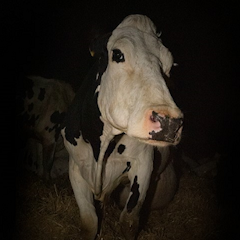
Articles on Dairy industry
Displaying all articles

A disfiguring disease of cattle and buffalo has arrived on our doorstep. We need to keep lumpy skin disease out of Australia, while preparing for the almost inevitable outbreak.

If Canada wishes to preserve domestic farms and enhance food security, officials must have limits on what they can concede to American and other foreign interests.

For Australia’s dairy farmers the worst of times are turning out to be the best of times for farmgate prices.

Andrea Arnold’s new film chronicles the daily strife of Luma – a dairy cow and mother.

In countries where the right to a healthy environment is part of domestic law, court decisions are already resulting in stronger climate action.

Australian cheese was once ‘vintage’ or ‘tasty’. Now we have a plethora of options. How did we get here?

Pressure is mounting on Australia’s dairy farmers, from farm gate prices to animal welfare concerns, and technology that could produce milk without cows.

Margarine makers once had to colour their product pink. Calls to restrict the use of the word milk are similarly protectionist.

New Zealand’s dairy industry is arguing consumers are being misled if the term “milk” is used for plant-based products such as almond or coconut milk, but consumers are savvier than that.

Dairy proteins may be the next product to be mass produced in labs, for use in fluid “milk” production and processed dairy products like yogurt and cheese.

Countries that have phased out supply management systems in the dairy industry have seen an initial spike in production, then a steady decline. That’s why Canada should protect its dairy farmers.

Calls to boycott supermarket-branded milk are misguided; and a royal commission into treatment of dairy farmers would be money wasted.

The USMCA, while imperfect, is overall a positive development for Canada. It has a number of structural elements that may very well leave us stronger when negotiating trade pacts in the future.

By 2100, heat stress in cows could see average sized dairy farms losing up to £14,000 a year.

In Ethiopia most of the milk comes from local breeds which aren’t suited to milk production.

From #SoyBoy to #MilkTwitter, there’s a sinister side to milk.

Donald Trump has described NAFTA as the worst trade deal ever signed by the United States. As NAFTA talks continue, here’s what Canada and Mexico can do if the unthinkable happens.





